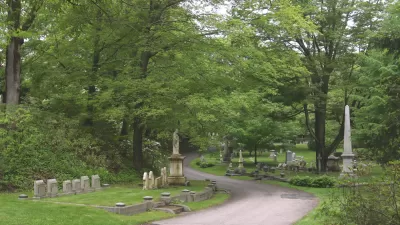The suburbs are becoming the inner-city, according to recent studies that are showing a shift in suburban demographics from predominantly white to incredibly diverse.
"As they swell, the suburbs are changing. Perhaps none ever quite resembled the colourless domestic enclaves popularised by 1970s television programmes such as 'The Brady Bunch'; now, they look nothing at all like them. America's suburbs are ethnically and demographically mixed-sometimes more so than its cities. Many are less dormitories than economic powerhouses. Among the most changed is one of the most famous."
"These days Willingboro is two-thirds black. Although it remains child-oriented, it is no longer exclusively so. One in eight residents is now aged 65 or over. As the proportion of children has fallen, schools have been converted to other uses. One has been turned into a community centre where, on a recent Friday afternoon, an R&B band entertained a mixed-race crowd of old folk. The music drifted into a small room where Muslims, a growing presence in the neighbourhood, had gathered for prayers."
"Such diversity is now common in suburbia. According to William Frey, a demographer, the white population of big-city suburbs grew by 7% between 2000 and 2006. In the same period the suburban Asian population grew by 16%, the black population by 24% and the Hispanic population by an astonishing 60%. Many immigrants to America now move directly to the suburbs without passing through established urban ghettos. Having conquered suburbia, ethnic-minority groups are now swiftly infiltrating the more distant 'exurbs.'"
Thanks to ArchNewsNow
FULL STORY: An age of transformation

Alabama: Trump Terminates Settlements for Black Communities Harmed By Raw Sewage
Trump deemed the landmark civil rights agreement “illegal DEI and environmental justice policy.”

Planetizen Federal Action Tracker
A weekly monitor of how Trump’s orders and actions are impacting planners and planning in America.

The 120 Year Old Tiny Home Villages That Sheltered San Francisco’s Earthquake Refugees
More than a century ago, San Francisco mobilized to house thousands of residents displaced by the 1906 earthquake. Could their strategy offer a model for the present?

In Both Crashes and Crime, Public Transportation is Far Safer than Driving
Contrary to popular assumptions, public transportation has far lower crash and crime rates than automobile travel. For safer communities, improve and encourage transit travel.

Report: Zoning Reforms Should Complement Nashville’s Ambitious Transit Plan
Without reform, restrictive zoning codes will limit the impact of the city’s planned transit expansion and could exclude some of the residents who depend on transit the most.

Judge Orders Release of Frozen IRA, IIJA Funding
The decision is a victory for environmental groups who charged that freezing funds for critical infrastructure and disaster response programs caused “real and irreparable harm” to communities.
Urban Design for Planners 1: Software Tools
This six-course series explores essential urban design concepts using open source software and equips planners with the tools they need to participate fully in the urban design process.
Planning for Universal Design
Learn the tools for implementing Universal Design in planning regulations.
Clanton & Associates, Inc.
Jessamine County Fiscal Court
Institute for Housing and Urban Development Studies (IHS)
City of Grandview
Harvard GSD Executive Education
Toledo-Lucas County Plan Commissions
Salt Lake City
NYU Wagner Graduate School of Public Service





























